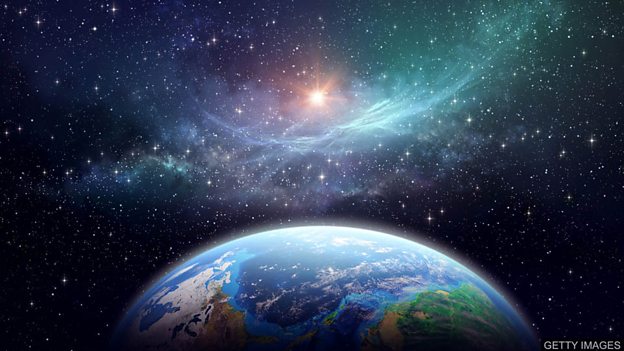欧洲的 “系外行星特征卫星”(Cheops)太空望远镜已发射升空,以探索太阳系外的行星。这个观测卫星将继续跟进以往的探索工作,尽全力发掘关于遥远世界的新见解。
Some 4,500 planets have been discovered orbiting other stars. But there's a feeling now that the science has to move beyond just finding and counting worlds - it has to characterise them, to say more about their composition and structure.
人们已发现约4500颗环绕其它恒星运行的行星。但现在有一种看法:科学必须超越仅仅发现天体及计算其个数,必须要描述它们的特征,进一步说明它们的成分和结构。
Cheops will do this by measuring the width of the planets. When combined with independent information about their mass, the new data should reveal insights on whether the worlds are rocky or have thick atmospheres, even whether they have rings and moons.
系外行星特征卫星将通过测量行星的直径来做到这一点。当这一数据与有关其质量的独立信息结合起来时,所得出的新数据可揭示这些天体的表面是否崎岖不平,有无厚厚的大气层,甚至能告诉我们它们有无行星环或卫星。
Cheops will draw up a shortlist for later, more sophisticated telescopes that hope to probe atmospheres for the chemical signatures of life. Many of the planets to be studied by Cheops, are bigger than our Earth, but smaller than Neptune, an in-between size that seems dominant in our galaxy.
系外行星特征卫星将为更精密的望远镜起草一份星体候选名单,这些望远镜将有望探测大气中生命的化学特征。系外行星特征卫星将研究的许多行星体积都大于我们的地球,但小于海王星,这个大小居中的体积在我们的星系中似乎占主导地位。
词汇
orbiting 环绕……运行的
composition 构成,成分
structure 结构,构造
insights 深刻的见解
sophisticated (机械)精密的,复杂的
probe 探测
chemical signatures 化学标记,化学特征
galaxy 星系
阅读理解:请在读完上文后,回答下列问题。
1. What do space scientists now want to understand about planets?
2. What information will scientists use to understand if other worlds are rocky or have thick atmosphere?
3. True or false? The Cheops telescope is looking for new worlds bigger than Earth.
4. Which planet seems to be one of the most noticeable in our galaxy?
答案
1. What do space scientists now want to understand about planets?
They want to characterise them, to say more about their composition and structure.
2. What information will scientists use to understand if other worlds are rocky or have thick atmosphere?
They will use independent information about their mass as well as measurements of the planets widths.
3. True or false? The Cheops telescope is looking for new worlds bigger than Earth.
False. Many, but not all, of the planets to be studied by Cheops, are bigger than our Earth, but smaller than Neptune.
4. Are planets that dominate our galaxy bigger or smaller than Earth?
Many of the planets to be studied by Cheops, are bigger than our Earth, but smaller than Neptune.

